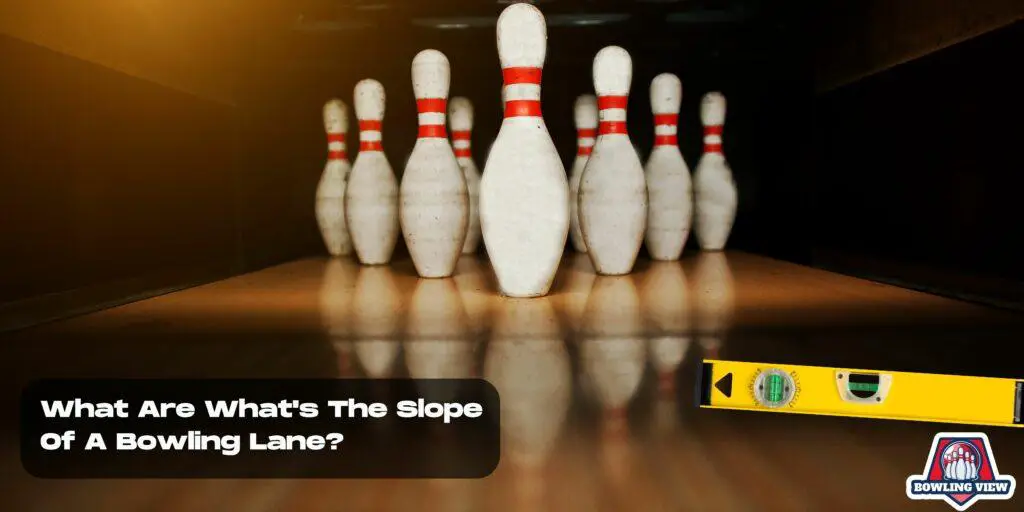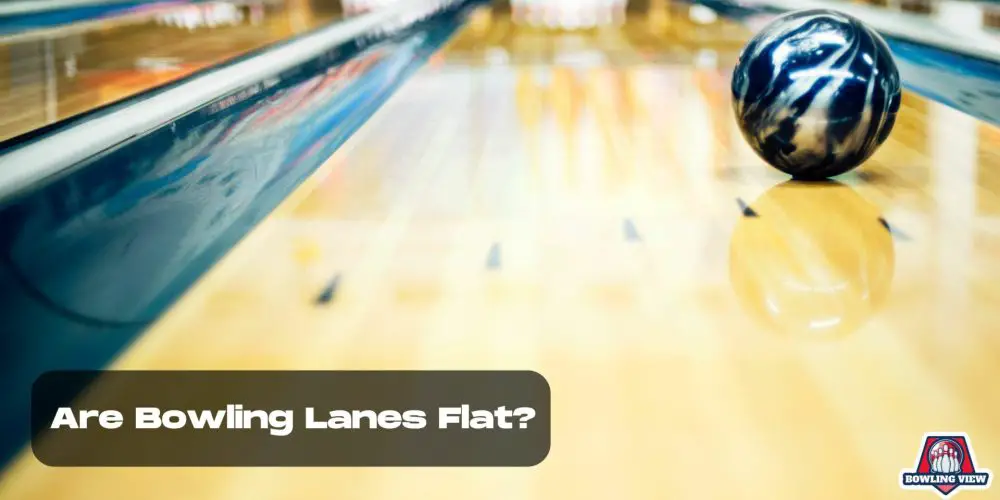Have you ever wondered about the unique construction of a bowling lane? This comprehensive guide provides fascinating insights into the construction and maintenance of bowling lanes.
It will help both casual bowlers and those looking to improve their game understand how a bowling lane’s topography impacts the path of a bowling ball.
Understanding these aspects of the game can significantly improve your performance and overall enjoyment of this popular sport.
What is a Bowling Lane?
A bowling lane is an integral part of the bowling alley. According to the United States Bowling Congress (USBC), a regulation bowling lane is 60 feet long from the foul line to the headpin and 42 inches wide.
The lane surface is typically made from synthetic materials or a combination of wood and synthetic materials, providing a smooth and consistent surface for the bowling ball to roll down the lane.
Are Bowling Lanes Flat or Sloped?
The assumption that bowling lanes are completely flat is a common misconception. The truth is bowling lanes are as flat as possible but have a slight slope toward the gutters on either side.
This slope is so subtle, however, that it is virtually imperceptible to the naked eye.
How are Bowling Lanes Different?
Bowling lanes can differ significantly from one another due to variations in oil patterns. The oil applied to a lane’s surface affects the way the ball rolls down the lane.
Depending on the oil pattern, a bowler may need to adjust their approach and delivery of the ball. Different bowling centers and even lanes within the same bowling alley may have different oil patterns, making each game a unique experience.
What are Bowling Lanes Made Of?
Bowling lanes were traditionally made from a specific type of wood known as hard rock maple. However, due to wear and tear and the need for regular maintenance, many bowling alleys now use synthetic lanes.
These synthetic lanes provide a uniform surface and are designed to mimic the characteristics of wooden lanes.
Exploring the Bowling Alley Floor
The bowling alley floor is more than just a flat surface. There’s a lot happening beneath your bowling shoes.
Apart from the foul line, the lane consists of several sections, including the approach, the arrows, the mid-lane, and the pin deck at the end of the lane. Each section has a role in how the ball will roll, especially given the presence of oil patterns.
What’s the Slope of a Bowling Lane?
The slope of a bowling lane is meticulously controlled by regulations set forth by the USBC.

The lane’s “crown,” or slope, must be within 40/1000ths of an inch from the center of the lane to the edge of the lane. This ensures that all lanes offer a fair and consistent playing field for bowlers.
The Role of Gutters in Bowling
Gutters in bowling lanes serve a significant purpose. They’re not just there to swallow your errant bowling balls. Gutters are designed to catch bowling balls that veer off the lane, preventing them from causing damage to the surrounding area or injuring other players.
Are Bowling Alleys Flat?
Contrary to popular belief, bowling alleys are not entirely flat. They are engineered to be as flat as possible, but they do have a slight slope towards the gutters.
This design element is subtle and does not dramatically impact the way the ball rolls down the lane, but it’s an important feature to note.
Summary and Key Points to Remember
Here we’ll summarize the crucial takeaways about bowling lanes. You’ll get to know about their typical construction, the reason for their subtle slope, the purpose of oil patterns, and why knowing all these factors can improve your game the next time you hit the lanes at your local bowling alley.
To conclude, understanding the characteristics and variations in bowling lanes can help you make more informed decisions, adjust your approach, and, ultimately, improve your game.
So, next time you visit your local bowling alley, remember the surprising truth: bowling lanes are not flat, and every lane has its unique character.
Related Article:
Frequently Asked Questions About Bowling Lanes
This section aims to address some of the most commonly asked questions about bowling lanes, such as their dimensions, the reason for their unique construction, the role of oil on the lane, and much more.
Check out this section to get in-depth knowledge about this fascinating sport.
A: Yes, bowling lanes are flat but have a slight slope to help the ball move toward the pins.
A: The length of the lane in a typical ten-pin bowling alley is about sixty feet, from the foul line to the pins.
A: The condition of the lanes, including oil patterns and lane topography, can greatly affect the ball’s skid and hook, influencing the ball’s path down the lane.
A: Bowling is a popular sport because it is accessible to people of all ages and skill levels. It provides a social and competitive environment for individuals and teams.
A: If you cross the foul line, it is considered a foul, and any pins knocked down on that throw will not count toward your score.
A: No, different bowling alleys may have different lane materials, which can result in varying ball reactions and differences in gameplay.
A: The choice of the bowling ball, including its weight, coverstock, and core design, can greatly impact how the ball behaves on the lanes and ultimately affect the game’s results.
A: The foul line is typically set about 15 feet away from the pins in a typical bowling game.
A: Yes, factors such as lane conditions, ball speed, release technique, and rotation can all affect the ball’s path down the lane.


